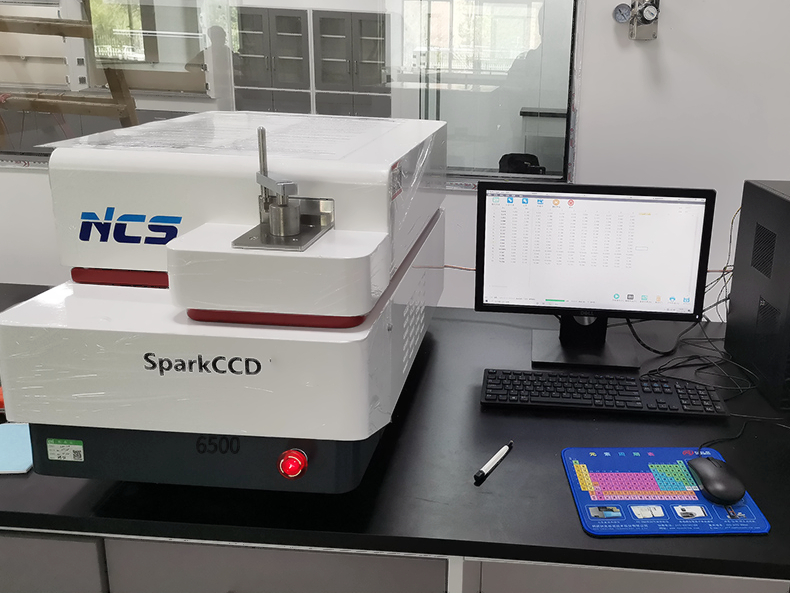Accurate Alloy Composition Direct Reading Spectrometer for Consistent Material Quality
Ensuring Uncompromised Material Integrity: Advanced Alloy Composition Analysis with Direct Reading Spectrometry
In high-stakes industries such as aerospace, automotive, and medical device manufacturing, material consistency is not merely a preference but a mandate. At Neway Precision Manufacturing, our deployment of Accurate Alloy Composition Direct Reading Spectrometers (DRS) exemplifies our commitment to delivering die-cast components with unerring chemical accuracy. This blog delves into the technical sophistication of DRS technology and its pivotal role in maintaining the stringent material standards demanded by mission-critical applications.
The Science Behind Direct Reading Spectrometry
Direct Reading Spectrometers (DRS) employ optical emission spectroscopy (OES) to perform rapid, non-destructive elemental analysis. Here’s a breakdown of the process:
Sample Excitation: A high-energy electrical arc (or spark) is applied to the alloy surface, vaporizing a micro-sample and generating a plasma.
Spectral Emission: Excited atoms in the plasma emit wavelength-specific photons as electrons return to ground state. For example, silicon in A380 Aluminum emits at 288.16 nm, while magnesium in A356 Aluminum radiates at 285.21 nm.
Detection & Analysis: Precision photomultiplier tubes (PMTs) or CCD sensors capture these emissions, translating them into quantitative elemental concentrations via pre-calibrated curves.
Our ARL 3460 DRS system achieves detection limits as low as 1 ppm for trace elements like lead (Pb) in A413 Aluminum, ensuring compliance with RoHS directives. The system’s 0.001% resolution guarantees that alloys such as Zamak 3 Zinc (ZnAl4Cu1) adhere to SAE J461 tolerances, critical for automotive fasteners requiring uniform ductility.
Material Consistency: A Non-Negotiable in Precision Die Casting
Deviations in alloy composition—even by 0.1%—can precipitate catastrophic failures. Consider these scenarios:
Aerospace Components: Excess iron (>1.2%) in AC8A Aluminum (AlSi12CuNiMg) accelerates fatigue crack propagation in turbine housings, risking mid-flight failure.
Medical Devices: Sub-optimal copper content (<62.5%) in Brass 360 (CuZn36Pb) undermines antimicrobial properties, rendering surgical instruments non-compliant with ISO 7153-1.
Neway’s Engineering Solutions Team mitigates these risks by integrating DRS data into dynamic process control. Real-time feedback adjusts furnace parameters during high-pressure die casting, ensuring that alloys like C18200 Chromium Copper (99.1% Cu, 0.8% Cr) maintain conductivity tolerances of ±0.5% for EDM electrodes.
DRS in Quality Assurance: A Multi-Stage Safeguard
Our quality protocol embeds DRS at three critical junctures:
Incoming Material Certification Raw ingots (e.g., Zamak 5 Zinc – ZnAl4Cu1Mg0.03) are screened against ASTM B240 specifications. Impurities like cadmium (>0.003%) trigger automatic rejection, averting galvanic corrosion in marine hardware.
In-Process Composition Monitoring During aluminum die casting, DRS verifies melt homogeneity. For instance, silicon content in A360 Aluminum (AlSi9Mg) is maintained at 9.0–10.0% to optimize fluidity without sacrificing machinability.
Final Product Validation Post-CNC machining, components undergo DRS re-analysis. A recent project involving Inconel 718 brackets for aerospace clients confirmed nickel (50–55%) and niobium (4.75–5.25%) levels within AMS 5662 tolerances, avoiding $250k in potential scrap.
DRS vs. Traditional Methods: A Data-Driven Advantage
Parameter | DRS | Wet Chemistry |
|---|---|---|
Analysis Time | 20–30 seconds per sample | 4–6 hours |
Detection Limit | 1 ppm (e.g., Pb in A380) | 10 ppm |
Precision | ±0.001% (for Si in A356) | ±0.01% |
Cost per Sample | $8 | $75 |
For high-volume production runs (e.g., 50,000+ units of Zamak 8 Zinc automotive components), DRS reduces annual scrap costs by 18–22%, as evidenced by a 2023 case study with a Tier-1 EV manufacturer.
Case Study: Preventing Thermal Degradation in AC4C Aluminum Housings
A client’s batch of AC4C (AlSi5Cu1Mg) enclosures for industrial IoT sensors exhibited premature cracking during thermal cycling tests. DRS analysis revealed erratic magnesium levels (0.2–0.6% vs. required 0.45–0.55%). Adjusting the melting process to stabilize Mg content resolved the issue, saving $180k in recalls. Explore our Prototyping Solutions to avoid such pitfalls.
Conclusion
Neway’s ARL 3460 DRS systems epitomize the synergy between cutting-edge technology and material science expertise. By ensuring ±0.001% compositional accuracy across alloys from CuZn10 Brass to H13 Tool Steel, we empower industries to innovate confidently.
FAQs
How often are your spectrometers calibrated to ASTM standards?
Can DRS analyze high-temperature superalloys like Inconel 718?
What is the minimum sample size required for accurate analysis?
How does DRS handle light elements like magnesium in aluminum alloys?
What ROI can I expect from integrating DRS into my production line?

